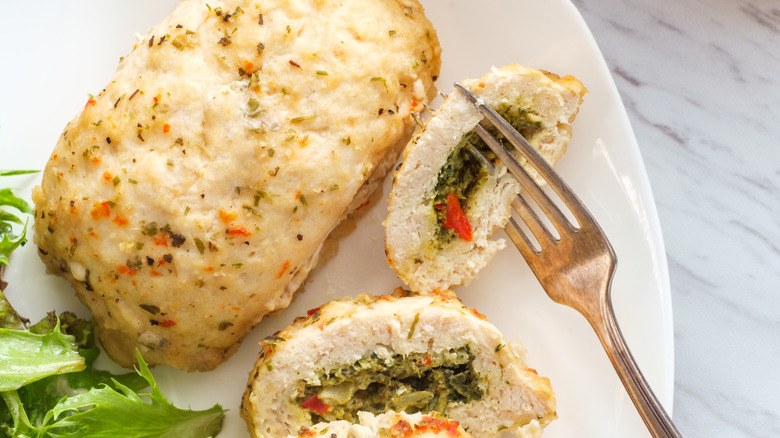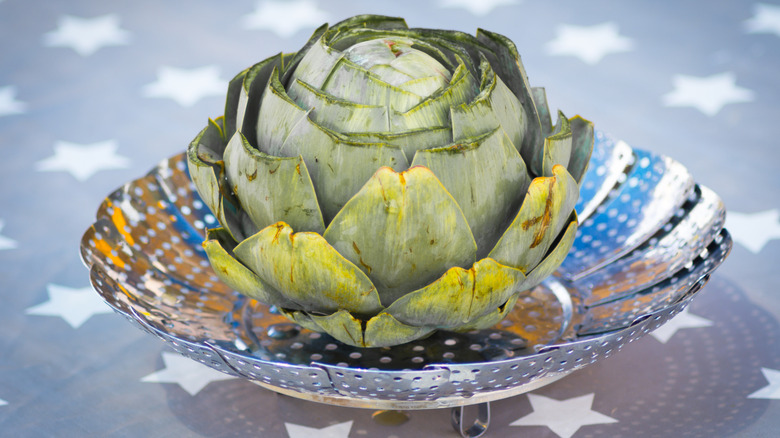Why The Filling In Your Stuffed Artichoke Chicken Is Spilling Out And How To Fix It
Artichoke-stuffed chicken breasts are a savory, saucy delight, but that's only if the filling stays inside the poultry. If you've pulled your chicken out of the oven and found the artichoke spilling out of its pocket and all over the baking dish, you probably made some mistakes in prepping your filling. Like with the filling in a pie, excess moisture inside your chicken breast can lead to spillage.
When any food is heated, the juices inside it get rustled up and become more fluid — this is the same logic that informs why you should let steak rest before cutting it. Artichokes (and their common partner in stuffed chicken breasts, spinach) are inherently moist, and that moisture is going to seep out of the veggies and ping-pong around the chicken. This is especially true if you're using brine-packed canned artichokes. If there's too much water in the chicken pocket, it's only a matter of time before it starts looking for a way out.
Tips for leak-free stuffed chicken breasts
The logical conclusion of this science is that you should make sure that your artichoke filling is as dry as possible before stuffing and baking. If you're filling your chicken with canned or frozen vegetables, drain (and thaw) them as much as possible before putting them in the bird. Some recipes specify that the stuffing should be thicker than your desired end result, as its liquidity will increase to saucy perfection during baking.
Also, avoid overfilling the chicken. Even if you properly dry your stuffing, it's still going to produce some amount of moisture and expand. A little breathing room — under an inch works — will allow this extra liquid to slosh around inside your chicken breast (good!) without filling it to a breaking point (bad!).
Your artichoke-stuffed chicken recipe likely uses canned artichokes, but if you find yourself using fresh artichokes (or any other kind of vegetable), make sure that you fully cook them before stuffing the chicken. Raw vegetables have more water content than their cooked counterparts, and the moisture problems will only worsen if you use them as a stuffing.

